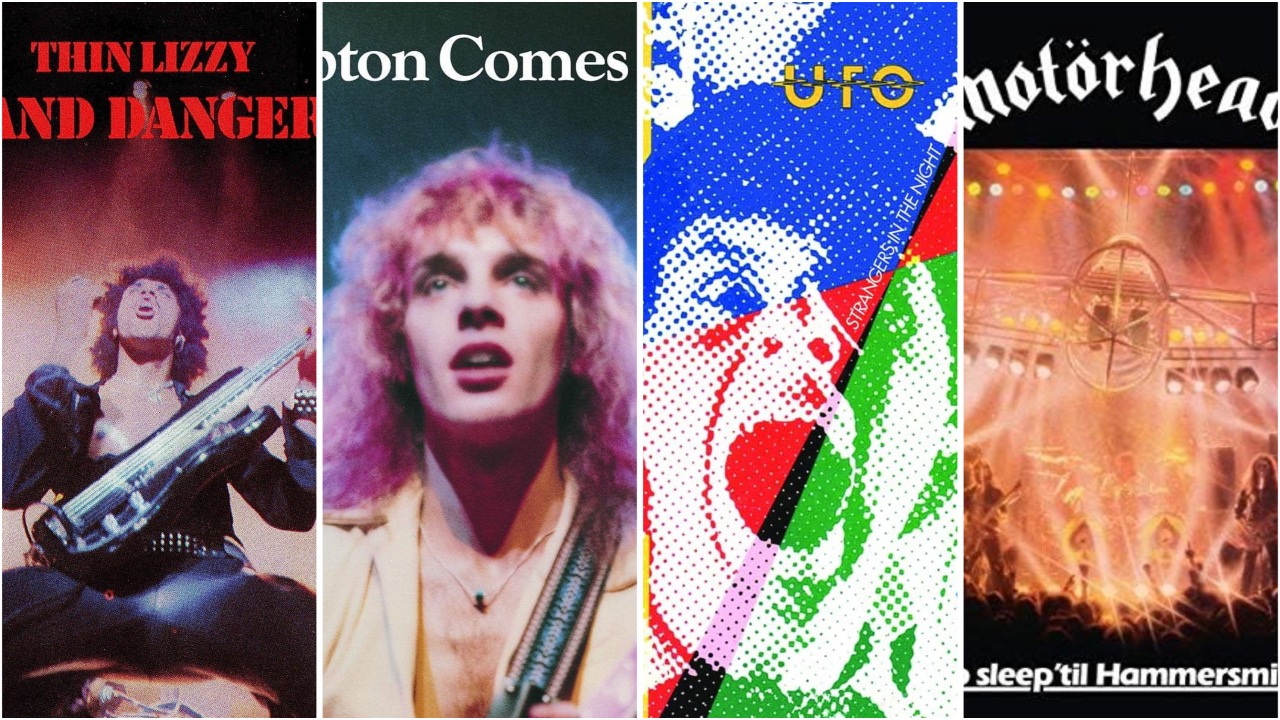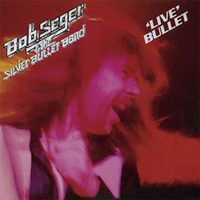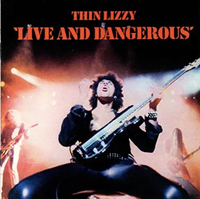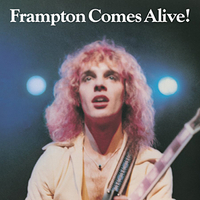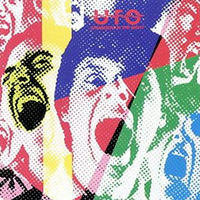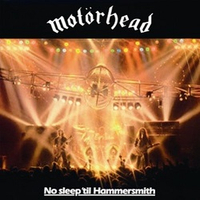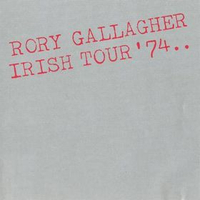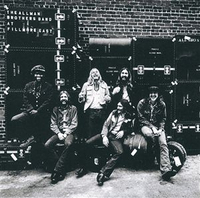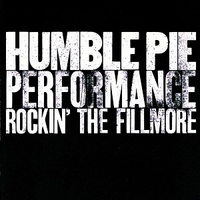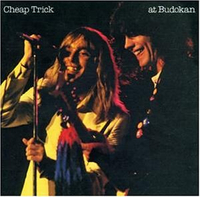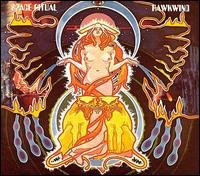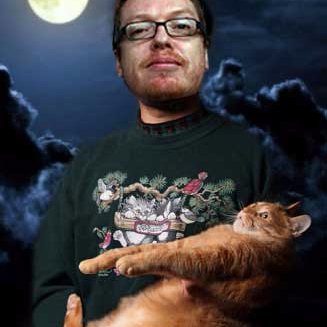It was a rite of passage for any serious rock band. When a live album wasn't confirmation of a band's elevation to legendary status, it was the release that kicked down the door.
From Kiss to Cheap Trick to Peter Frampton and beyond, rock's illustrious history is littered with live albums that sold millions, doing more to break a band than any number of studio releases.
For others, the live album was more about consolidation. About taking stock. About celebrating past success as much as current status.
Some bands never bettered those live albums. And while the live recording has lost its status – being gently relegated to "bonus disc" status over the years – those original 70s albums (perhaps unsurprisingly, nine of our ten choices are from that decade) are still landmarks.
We're spoilt for choice. So there's no Alive! No Alive II. No Tokyo Tapes. No Unleashed In The East. No Made In Japan. No Live At Leeds.
Instead, we've got 10 albums whose light is undimmed after all this time. 10 albums that captured their subjects at their absolute, thrilling best. 10 albums no record collection is complete without.

Bob Seger & The Silver Bullet Band - 'Live' Bullet
Recorded at the 12,000-seat Cobo Hall in Detroit at a time when Bob Seger was struggling to fill club venues in other towns, ‘Live’ Bullet brings together tracks from 1975’s Beautiful Loser with a smattering of earlier highlights, to devastating effect. Turn The Page, just one highlight, with its haunting sax, is stunning.
There may be slicker, better-recorded versions of these songs on other albums, but none capture the near-hysteria caused by a hometown show by the Silver Bullet Band at their intense, electrifying peak. This is the album that let the world outside Detroit know they were late to the party but was also forgiving enough to invite them in.
Thin Lizzy - Live And Dangerous
Although producer Tony Visconti later claimed that 75 per cent of Live And Dangerous was recreated after the fact in the studio, as someone who was at one of the shows I can assure you that the album is an accurate representation of the classic Lynott-Robbo-Gorham-Downey line-up at the peak of their powers.
It does what all truly great live albums do: delivers even better performances of stone-cold studio classics. Best of all, it conveys the sense – palpable at the shows – of what those guys were really like to be in the same room with.
There must have been 50 people hanging out on either side of the stage, everyone from George Best to various Page 3 girls, TV celebs, groupies and drug dealers, all spilling on to the stage at various moments. You can’t see it on the record, but you can hear the fun, feel the crackle.
Peter Frampton - Frampton Comes Alive!
In mid-1975, ex-Herd/Humble pie guitarist Peter Frampton was a moderately successful solo artist. Within a year, Frampton Comes Alive! had smashed all known sales records, transforming him into one of rock music’s biggest stars.
Until that point, most live records were little more than thumbprints of an artist performing their most popular songs. The laidback ...Comes Alive! went a stage further, as the band elongated their songs to capitalise upon their potential: Do You Feel Like We Do was stretched to twice its original length as Frampton serenaded the baying audience with his talk-box, an instrument also used to stunning effect on the enduring Show Me The Way.
Iron Maiden’s Steve Harris knows a thing or two about live albums. Maiden have made eleven of them – including the legendary Live After Death from 1985. And Harris has no doubt about what is the greatest live album ever made. “UFO are one of my favourite bands,” he says. “And Strangers In The Night is my favourite live album. Some albums get boring, but I’m still listening to Strangers.”
Released in 1979, Strangers In The Night was the final act of UFO’s golden years. Just before the album was released, guitarist Michael Schenker quit the band. But his performances were stunning. Everyone in the band was at the top of their game. And across this double album are so many great tracks: Natural Thing, Only You Can Rock Me, Lights Out, This Kid’s, Rock Bottom, Doctor Doctor and arguably best of all, the Zeppelin-sized epic Love To Love.
Motorhead - No Sleep 'Til Hammersmith
Everything louder than everything else was their motto, and that’s how it sounded on No Sleep ’Til Hammersmith. It featured the definitive Motorhead line-up: Lemmy on bass and vocals, ‘Fast’ Eddie Clarke on guitar, ‘Philthy Animal’ Taylor on drums. And they were riding high off three back-to-back classic albums: Overkill, Bomber and Ace Of Spades.
There is a manic intensity in their speed-driven attack, and a general sense of on-the-road lunacy summed up when a roadie introduces the track (We Are) The Road Crew by screaming into the mic. Ditto the album’s title: the battle cry for a campaign of ransacking and pillage.
Rory Gallagher - Irish Tour '74
Irish Tour ’74, a two-million selling vinyl double, has long been thought his best – a masterclass in improvisational blues rock with breathtaking guitar solos. In effect it was three-sides a soundtrack to a Tony Palmer film of the tour, plus one side of after-hours jamming recorded on the Ronnie Lane Mobile Unit.
While the sound quality is variable – partly due to the fact that they couldn’t get insurance for Ronnie Lane’s Mobile Studios in the more troubled areas of Northern Ireland – the album never loses its primal, raw urgency. It’s the sound of a band leaning out over the precipice – something Rory Gallagher deliberately encouraged, making up the show as he went along.
The Allman Brothers Band - At Fillmore East
Duane Allman had a word for what the group did on stage: religion. The tenets of it involved a baptism in blues, rock and jazz, coupled with a faith in your bandmates and the ability to testify with your instrument.
At Fillmore East, recorded in New York in 1971, not only captured the best of that deep-fried divinity (with some clever editing from Tom Dowd), but also pioneered southern rock and defined the art of the jam.
The shows have been reissued in their entirety as The Fillmore Concerts, but the original album stands as the must-have bible for all things Allman. Statesboro Blues, Stormy Monday, Whipping Post… Amen, Brothers.
Humble Pie - Performance: Rockin’ The Fillmore
They were impressive enough in the studio, but playing live was where Humble Pie really excelled. This sprawling double album, recorded in New York in May 1971, is a magnificent showcase for Marriott’s searing vocals and his fierce interplay with fellow guitarist Peter Frampton.
Apart from the rampaging might of Stone Cold Fever, the songs are spirited covers, from the slow jam of I’m Ready to extended versions of Rolling Stone and the R&B classic I Don’t Need No Doctor. Perhaps the pick of the bunch is a titanic reconfiguration of Dr. John’s I Walk On Gilded Splinters, stretched out dramatically over a wholly compelling 24 minutes.
Like Kiss with Alive!, and Peter Frampton with Frampton Comes Alive, Cheap Trick’s career was effectively launched by an era-defining ‘best-of-the-band-so-far’ live album.
Recorded at the legendary Tokyo venue, the vitality and melodic might of the band were astonishing. The performance brought out the best in songs that had hitherto failed to make their mark; suddenly everyone wanted to know about Clock Strikes Ten, Surrender, I Want You To Want Me.
To this day, the combination of brilliant, simple tunes, confident musicianship and crowd hysteria on At Budokan is a reminder as to why Cheap Trick are among the elite artists in hard rock history.
If a live album is supposed to sum up a band’s career to that date, then this one more than does the job for Hawkwind. One of the most iconic of all double live albums, it was recorded in Liverpool and Newcastle in 1972 on the Doremi Fasol Latido tour.
As you’d expect, much of the set comes from that particular studio album, with three new songs included to add further spice. And the presence of electronic and spoken-word interludes linking the music together adds to the atmosphere.
“What bands tended to do was clean the sound up to make it as much like a studio album as possible," author Ian Rankin told us. "Space Ritual was different... even now it’s the only live album I go back to time and time again – I must have four or five copies in various formats. And still no-one really sounds like them.”
Classic Rock Newsletter
Sign up below to get the latest from Classic Rock, plus exclusive special offers, direct to your inbox!
